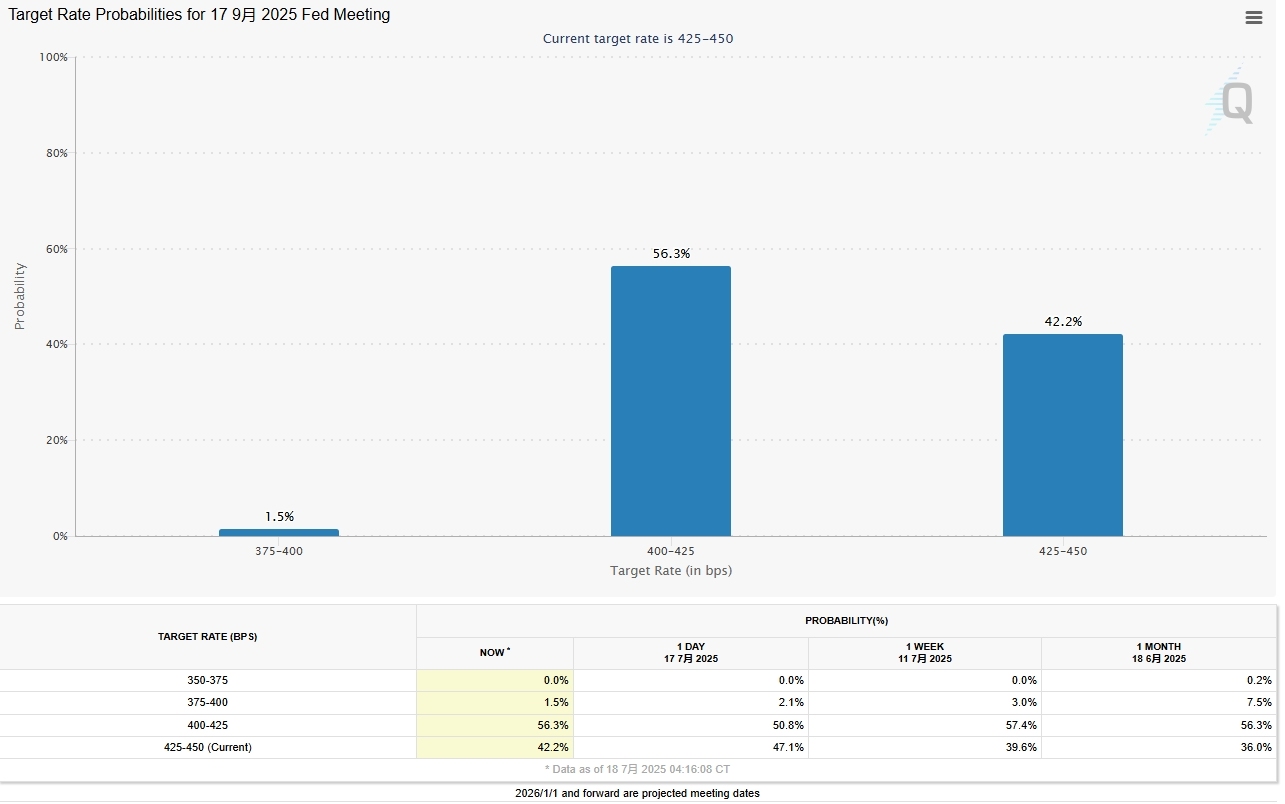Can the "Shadow Chairman" Influence Fed Decisions as Waller Worries About the Labor Market and Warsh Criticizes "Fed Independence"?
TradingKey - On Thursday, Federal Reserve official Christopher Waller made a strong case for a rate cut in July, arguing that the decision should be made at the end-of-month policy meeting. He suggested that inflation stemming from tariffs is temporary and that waiting for the labor market to deteriorate before cutting rates would be unwise. Waller is considered a potential candidate for Fed Chair.
On the same day, another potential candidate, Kevin Warsh, expressed that maintaining Fed independence does not conflict with rate cuts and that there should be no excessive worry about tariffs causing sustained inflation. Previously, President Trump indicated that he hopes to influence market expectations and monetary policy direction by appointing a "Shadow Chair" before Powell's term ends.
However, the latest analysis from Morgan Stanley suggests that even if Trump were to nominate a "Shadow Chair" to the Federal Reserve's board, it would be challenging to significantly alter the direction of U.S. monetary policy in the short term.
Reasons for Rate Cuts
Waller emphasized that tariffs lead to a one-time price increase, limiting upward inflation risks. Moreover, he stated that the labor market is not as robust as it appears, with private sector job growth nearing a "stall." Therefore, he believes that the Fed should cut rates, aiming for a 3% level from the current range of 4.25%-4.5%.
Warsh criticized the notion of "Fed independence," noting that while central bank autonomy is crucial, it is not absolute. He argued that under Powell, the Fed has overstepped its bounds into policy areas. Furthermore, maintaining independence does not preclude rate cuts, and reactions to tariff policies should not be exaggerated.
Possibility of Rate Cuts
The stronger-than-expected June non-farm payroll data released earlier this month has made a rate cut in July almost impossible. Nick Timiraos, referred to as the "New Fed Communicator," believes that the June non-farm report could prompt the Fed to maintain a wait-and-see approach over the summer.
The June Consumer Price Index (CPI) indicated moderate inflation growth in the U.S., which Timiraos stated supports both Trump's call for rate cuts and Powell's decision to hold steady.
The initial jobless claims data released on July 17 showed a decline for the fifth consecutive week, reaching the lowest level since mid-April, demonstrating resilience in the labor market and providing data to support Powell's decision to refrain from cutting rates.

July Rate Cut Expectations, Source: CME FedWatch
According to CME's FedWatch tool, the market expects only a 2.6% chance of a July rate cut.
Looking further ahead, Morgan Stanley believes that even with a new chairperson, it will be difficult for the Fed's policy path to shift shortly, providing a more straightforward path for rate cuts. This is partly due to the mechanism in which the Federal Open Market Committee's (FOMC) monetary policy decisions are made by voting among all members, and the chair cannot make unilateral decisions.
Additionally, Morgan Stanley suggests that historically, politically appointed officials tend to downplay previous political positions once in office, focusing instead on maximizing sustainable employment and price stability.
Current market pricing indicates that investors expect rates to be slightly above 3% by the end of next year, suggesting that the market does not foresee drastic changes in Fed monetary policy after Powell's term ends in May next year.



